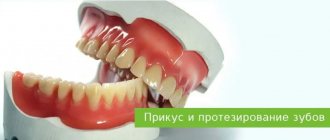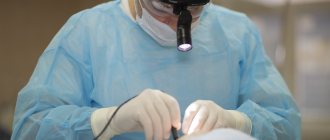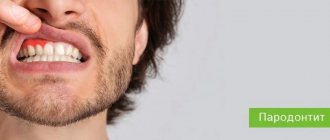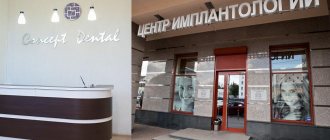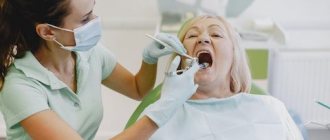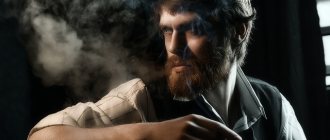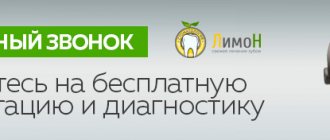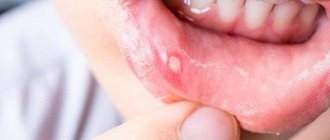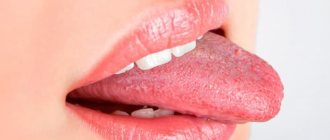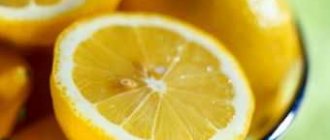In the medical field, the effect of weak low-voltage electrical impulses on deep tissue layers is called electrophoresis (EP). This is one of the most common physiotherapeutic methods, used in practice since the last century. It has a local effect on the treated areas, provides a general therapeutic and prophylactic effect, and in tandem with medications guarantees the safest and most painless administration.
The ability of dispersed phase particles to move in a liquid or gaseous medium under the influence of an electric field was discovered back in 1809. The authors of the discovery were P.I. Strakhov and F.F. Reiss is a professor at Moscow University. In 1887, the Swedish physical chemist Svante Arrhenius proposed a theoretical basis for medicinal EF. 50 years later, this proposal found practical application under the leadership, again, of the Swedish scientist A. Tiselius.
Since then, the EF method of physiotherapy has undergone periods of widespread dissemination and moments when its effectiveness became a reason for skeptical opuses. Today, it has found its application in various medical fields: from otolaryngology to gynecology and orthopedics.
What is electrophoresis?
The method is based on the fact that medications are delivered to the diseased area using direct current, which has low voltage and strength.
The combined effect of galvanization and drugs activates metabolic, immune and physicochemical processes. The therapeutic effect is determined by which electrode is dominant during the procedure. The cathode allows you to normalize metabolism and the functioning of the endocrine glands, expand lymphatic and blood vessels, and stimulate the production of biologically active substances.
The anode is responsible for relieving pain and reducing inflammation. It also has a calming effect, removes excess fluid from the body and relieves swelling.
The advantages of electrophoresis are:
- increasing the effectiveness of the drug;
- prolongation of their action;
- no adverse reactions from the gastrointestinal tract;
- the ability to use smaller doses of drugs.
In addition, this procedure does not damage the skin.
Features of electrophoresis in children
When prescribing treatment, pediatricians often choose auxiliary therapy - electrophoresis (or iontophoresis). It is safe, has minimal risks of side effects, and allows small doses of drugs to be administered to areas with pathological changes. The procedure is painless for a small patient; tissues are not damaged when the medicine is administered.
Its popularity is due to the fact that current can have a positive effect on the human body:
- dilates blood vessels;
- relaxes muscles;
- relieves inflammation;
- stimulates the immune system;
- regulates hormonal levels.
Electrophoresis in children and adults differs because:
- Children's skin is thin and immature and has fewer cell layers.
- The skin of children absorbs substances faster and has low resistance to current.
- Up to four months, infants do not have developed sweat glands, and thermoregulation is not well developed.
- The epidermis in children has a high ability to regenerate.
Due to these factors, treatment with electrophoresis should be carried out under the supervision of medical personnel and parents, taking precautions.
For young children, the procedure should not exceed 7-8 minutes. For older children, the duration increases to 15-20 minutes.
Where in Moscow can electrophoresis be done?
The Polyclinic+1 clinic on Tretyakovskaya employs qualified specialists who are fluent in this method of physiotherapy. We offer medicinal electrophoresis for the treatment of diseases:
- cardiovascular;
- musculoskeletal;
- urogenital;
- nervous and other systems, as well as the gastrointestinal tract.
We use proven drugs: lidase, calcium chloride, dimexide, magnesia, karipazim and so on.
Our specialists individually select the current strength so that the procedure is effective and the patient does not experience discomfort. They also calculate the amount of the drug, taking into account
- patient's age;
- characteristics of his body;
- skin condition and a number of other parameters.
Before prescribing medicinal electrophoresis, we will make sure that you have no contraindications. These include:
- neoplasms;
- tendency to bleed;
- skin changes;
- feverish conditions and so on.
The cost of one electrophoresis procedure depends on its type:
- superficial (through the skin) - 800 rubles;
- abdominal (through the rectum or vagina) - 1200 rubles.
How does the device for electrophoresis work?
The standard technique for performing the electrophoresis procedure for protrusions or hernias is as follows. Stationary Amplipulse-5 (about 39 thousand rubles), or portable Potok (11 thousand rubles) devices, or more modern devices are used.
Any device is an alternating current rectifier, previously electron tube, currently semiconductor, with regulation of the current strength on the electrodes. Almost all devices operate from a standard alternating current network with a frequency of 50 Hz and a voltage of 220 V, are manufactured according to the second class of protection and, accordingly, do not require grounding devices. The device must be equipped with a milliammeter (either analog with an arrow, or digital in modern devices). There is a potentiometer, or rheostat, that allows you to slowly and smoothly regulate the current in the patient circuit between the electrodes. In older models, there is a separate shunt to the ammeter, which allows you to switch the limits of the measured current from 5 and 50 milliamps.
Apparatus.
In new models, the shunt is integrated into the microcircuit. The device is equipped with output terminals with mandatory polarity markings: “plus” - red and “minus” - white. The kit includes marked wires and a variety of electrodes that can be used as an anode, and in another circuit, as a cathode, since both electrodes are made of the same material. Electrodes are usually made of thin lead because they can bend and follow the curves of the body. Electrodes must be regularly cleaned of lead oxide as oxidized electrodes become less effective. Modern electrodes are made of special fabric impregnated with graphite. They are non-toxic, elastic, and conduct electricity well.
Electrophoresis in gynecology
At the Polyclinic+1 clinic we practice an integrated approach to the treatment of gynecological diseases. Therefore, along with tablets, suppositories and other means, we use such an effective method as electrophoresis.
This method is that the drug is delivered directly to the diseased organ, bypassing the circulatory system and gastrointestinal tract. The procedure involves a weak alternating current flowing through positive and negative electrodes. It causes medicinal solutions to disintegrate into ions, which enter the body through the sweat and sebaceous ducts of the skin.
The advantages of electrophoresis are:
- accuracy of impact;
- the result after one or two procedures;
- painlessness;
- non-traumatic.
Among the advantages are efficiency and cost-effectiveness: to achieve the goal, you can use a minimum amount of medications.
Advantages and disadvantages
The general advantages of electrophoresis are as follows:
- the drug is administered actively and purposefully, since only those drugs that have an ionic form in solution are selected for electrophoresis, and the drug accumulates under the skin;
- the drug acts for a long time, has a therapeutic effect several days and even weeks after the end of the course;
- the medicine can be administered specifically, that is, paravertebrally or deep into the musculo-ligamentous apparatus of the spine, if we are talking about protrusions and hernias;
- An important point is the almost complete absence of adverse reactions, because the medicine does not pass through the gastrointestinal tract, liver, and does not irritate the gastric mucosa. Quite often, the drugs for electrophoresis that are used for protrusions or hernias will be nicotinic acid and aminophylline, and in the case of electrophoresis there is no need to be afraid of their usual side effects characteristic of oral use;
- electrophoresis differs favorably from injections in the method of drug delivery. After all, if there is a spasm of capillaries in the pathological focus, such as in chronic back pain due to the presence of a protrusion or hernia, then the injection often does not resolve for a long time. And the electric current is guaranteed to deliver medications evenly exactly where they are needed, bypassing the blood;
- electrophoresis helps to bring into the depths of the tissues only the medicine that is necessary: no impurities, ballast substances, which are contained in abundance in tablets, do not enter biological tissues during electrophoresis. In the same way, no associated solvent, without which various injections and intravenous infusions are impossible, is used. Therefore, the body is not loaded with excess fluid, microcirculation is not disrupted, and post-injection infiltrates and complications do not form;
- finally, electrophoresis is a completely painless, bloodless, and atraumatic method of drug administration, which is well tolerated by both adults and children.
Electrophoresis also has disadvantages. The most important of them is that not all drugs are suitable for this method of treatment, since not all of them disintegrate into ions, and having disintegrated, not all remain active in a dissociated state. Medicines that do not dissociate into ions are unsuitable for electrophoresis, that is, electrically neutral molecules. The second drawback is that a small electric current is not capable of creating fairly high concentrations of the drug, and it cannot be increased, otherwise the procedure will turn into an unpleasant and painful procedure. Finally, under the influence of electric current, many drugs change their activity, or even become useless, such as some anticoagulants.
Electrophoresis in gynecology: indications and contraindications
Exposure to electric fields in combination with active substances allows:
- relieve swelling;
- eliminate the inflammatory process;
- improve blood circulation;
- accelerate interstitial metabolism.
In addition, the procedure activates secretory activity, as well as the regeneration of the endometrium of the uterus after miscarriages and abortions.
Various substances are used for electrophoresis in gynecology - for example, zinc is good for ovarian pathologies and stimulates the production of hormones. This solution is also indicated for inflammation, cervical erosions and uterine fibroids.
Electrophoresis with lidase in gynecology is prescribed after surgical interventions. An extract from animal testes eliminates adhesions and prevents the formation of scars.
In gynecology, electrophoresis is also used with:
- iodine - with high estrogen levels;
- potassium - for pain caused by adhesions;
- dimexide - for cervical erosion, inflammatory and infectious diseases;
- magnesia - for gestosis or danger of premature birth;
- copper - with ovarian hypofunction.
The list of diseases for which this procedure is recommended is constantly expanding, but there are also contraindications.
We carefully examine our patients to ensure that electrophoresis can be performed without any concerns. Women who are found to have:
- dermatitis;
- tuberculosis;
- blood diseases;
- ischemia;
- hypertension II and III degrees;
- neoplasms;
- acute purulent processes.
Contraindications are also intolerance to current and a tendency to bleed.
What medications are used for electrophoresis for hernia
Karipazim
Carazipam for electrophoresis
It is a solution for external use, which contains papain, a natural plant substance. The main effect of the drug is the breakdown of necrotic elements and the dilution of blood clots, viscous secretions and other protein compounds. Electrophoresis has a beneficial effect on cartilage tissue, stimulating its regeneration, and enhances the restoration of intervertebral disc tissue.
For external use only. Side effects include allergic reactions. Contraindications: pregnancy, breastfeeding and hypersensitivity to the main component. Does not have a systemic effect on the body.
No cases of drug overdose have been identified. There are no important clinically significant interactions with other drugs. Produced in Georgia and Russia. The price for one ampoule, on average, is from 60 rubles.
The course of treatment must be at least 14 procedures.
Karipain Plus
Karipain Plus for electrophoresis
The drug contains papain, bromelain (an enzyme isolated from pineapple pulp), lysozyme (an antibacterial agent), collagenase (an enzyme that breaks down collagen) and excipients (sodium chloride and lactose monohydrate). It relieves local inflammatory processes and reduces joint pain. Stimulates microcirculatory processes and restores skin elasticity. With the help of galvanization, it penetrates deep into the tissue, stimulates natural reconstructive processes, and softens the hernia. This helps relieve inflammation and reduce pain.
Among the contraindications:
- pregnancy period;
- acute inflammatory processes;
- tissue necrosis;
- disintegration of the intervertebral disc;
- allergic reactions.
No cases of overdose have been identified. There are no important clinically significant interactions with other drugs. Produced in Georgia and Russia. The price for one ampoule, on average, is from 210 rubles.
The number of sessions is individual, on average 10-20 sessions.
Novocaine
Novocaine for electrophoresis
The main active ingredient of the drug is procaine hydrochloride 5 mg or 20 mg. Auxiliary ingredients: sodium chloride, water for injection. The drug is available in the form of an injection solution. Has a local anesthetic effect. Therefore, it is prescribed mainly to patients with pronounced pain syndrome due to a hernia.
Contraindications include hypersensitivity to the main active ingredient, progressive cardiovascular disorders, and pregnancy.
Side effects include:
- headache;
- drowsiness, weakness;
- blood pressure surges;
- tachycardia;
- nervous excitement.
Novocaine enhances the effect of sedatives, anesthetics and muscle relaxants. Therefore, it must be used for electrophoresis strictly as prescribed by the attending physician.
They mainly use a drug of Russian origin. The price for 10 ampoules of 0.5% 10 ml starts from 50 rubles. The duration of the course and dosage are regulated by the doctor.
Eufillin
Eufillin for electrophoresis
The active ingredient of the drug is aminophylline. The effect of the drug leads to a decrease in muscle contractile activity. Eufillin is mainly used in pulmonology. In the treatment of hernias, it is used to dilate blood vessels, which improves blood flow in the lesion and stimulates venous outflow. Due to this, pain is reduced and swelling in the area of inflammation is resolved. Thanks to galvanization, the drug has a targeted effect without having a systemic effect.
Local application reduces the occurrence of side effects. A slight drop in blood pressure, dizziness, and tachycardia may occur. Contraindications: allergic reactions, convulsions, severe liver or kidney failure.
Eufillin increases the effect of glucocorticoids, drugs that excite the central nervous system. Reduces the activity of lithium salts. The country of manufacture of the drug is Russia. A box of 10 ampoules will cost 40-60 rubles.
Trypsin
Trypsion for electrophoresis
Trypsin is an enzyme of the hydrolase class that breaks down peptides and proteins. Therefore, its pharmacological effect is regenerative and anti-inflammatory. The main function is the disposal of half-life products.
Contraindications: tumor processes, pregnancy, allergic reactions. Side effects include: tachycardia, allergies.
There are no important clinically significant interactions with other drugs. Trypsin is produced in Russia. The price for trypsin 10 ampoules of 10 mg each starts at an average of 500 rubles.
The duration of the course and dosage are prescribed by the attending physician.
We use non-surgical hernia treatment techniques
Read more about our unique technique
Medicinal electrophoresis in the gynecology department of our clinic
The procedure is prescribed by experienced gynecologists - R. A. Sasunova and V. S. Rigas. Guided by medical indications and the individual characteristics of the patient, they determine the order of the course of treatment. The woman’s condition is monitored and, if necessary, prescriptions are adjusted.
In our gynecology department we use two types of electrophoresis:
- percutaneous (to the lower abdomen);
- vaginal.
In the first case, the cost is 800 rubles per session, in the second - 1200 rubles.
Principles of rehabilitation of patients with connective tissue dysplasia
An important condition for effective rehabilitation of patients with various nosological forms of connective tissue dysplasia (CTD) is the correct choice of medical means: non-drug, medicinal or surgical. Many years of experience in dispensary observation of families of patients with various variants of hereditary connective tissue diseases and CTD, analysis of literature data made it possible to formulate the basic principles of treatment for these patients:
- Non-drug therapy (adequate regimen, diet, physical therapy, massage, physical and electrical treatment, psychotherapy, spa treatment, orthopedic correction, vocational guidance).
- Diet therapy (use of food products enriched with protein, vitamins and microelements).
- Drug symptomatic therapy (treatment of pain, improvement of venous blood flow, taking beta blockers, adaptogens, sedatives, hepatoprotectors, surgical treatment, etc.).
- Pathogenetic therapy (stimulation of collagen formation, correction of disorders in the synthesis and catabolism of glycosaminoglycans, stabilization of mineral and vitamin metabolism, improvement of the bioenergetic state of the body).
An obligatory stage in the management of patients with CTD after a comprehensive examination and diagnosis is a competent conversation between the doctor and the patient before starting rehabilitation therapy. It is necessary to gain the trust of both the patient and his parents in terms of the possibility of significantly improving the quality of life and restoring lost adaptive skills. Experience shows that the doctor should not waste time on this first, extremely important conversation, on which the effectiveness of rehabilitation measures largely depends. It is important to correctly and in an accessible form explain to the sick teenager and his parents:
- what is connective tissue dysplasia;
- what is the role of genetic and environmental factors in its origin;
- what changes in the body it can lead to;
- what lifestyle should be followed;
- how quickly the effect of the therapy occurs and how long it should be carried out;
- how often should instrumental studies be carried out;
- what are the possibilities of surgical and therapeutic correction;
- what are the dangers of playing professional sports and dancing;
- What are the restrictions in professional activities?
If necessary, consultation should be held on the issue of marriage and family, suitability for military service, etc. The purpose of this conversation is to instill the idea of the need for the patient’s active participation in treatment, prevention of complications, and identification of symptoms of disease progression. If possible, the patient should be convinced that the changes in connective tissue observed in him require a special lifestyle, the quality of which is largely determined by his efforts in the desire to help himself. It should be remembered that sufficient knowledge about the disease can help the patient look into the future without fear.
Next, we will allow ourselves to outline in more detail the basic principles of therapy for patients with DST.
Basic principles of non-drug therapy
Daily regime. In the absence of significant functional disorders of leading organs and systems, patients with CTD are shown a general regimen with the correct alternation of work (study) and rest. The exception is patients with osteogenesis imperfecta, who, in order to prevent fractures, need to lead a gentle lifestyle (wear corsets, use crutches, avoid trauma). Patients with osteoarthritis due to DST also require limiting the load on the affected joints. They are not recommended to run, jump, lift and carry heavy objects, squats, fast walking, especially over rough terrain, climbing mountains and walking up stairs. It is advisable to avoid a fixed position, such as prolonged sitting or standing in one position, which impairs blood flow to sore joints. If the joints of the upper extremities are affected, you should limit carrying heavy objects, manually pushing up heavy things, playing musical instruments, and typing on a hard keyboard. The rhythm of optimal motor activity for patients with osteoarthritis due to DST is a reasonable alternation of load (10–15 minutes) with periods of rest (5–10 minutes), during which the joint should be unloaded in a lying or sitting position. To restore blood circulation after exercise in the same positions, you should perform several movements in the joints (flexion, extension, bicycle).
Physical therapy is indicated for all patients with DST. Regular (3-4 times a week, 20-30 minutes) moderate physical training aimed at strengthening the muscles of the back, abdomen, and limbs is recommended. Exercises are carried out in a non-contact static-dynamic mode, in a supine position. Physical exercise should not increase the load on the ligamentous-articular apparatus and increase the mobility of the joints and spine. The method of physical therapy should definitely be discussed with a specialist. In this case, it is necessary to take into account the nature of the pathology, clinical, radiological, and biochemical criteria for damage to the musculoskeletal system. It is useful to prescribe sets of exercises performed while lying on your back or stomach. For most patients, hanging and spinal traction, types of contact sports, isometric training, weightlifting, and carrying large loads are contraindicated. Hydrotherapy and therapeutic swimming, which relieve static load on the spine, have a good effect.
Aerobic training of the cardiovascular system is recommended: dosed walking, skiing, traveling, hiking, jogging, comfortable cycling. Dosed physical activity on exercise machines and exercise bikes, badminton, table tennis, exercises with light dumbbells, and breathing exercises are useful. Systematic physical activity increases the adaptive capabilities of the cardiovascular system. However, if there are signs of its damage - myocardial dystrophy, cardiomyopathy, myxematous degeneration and significant prolapse of the valve leaflets, dilatation of the aortic root - excessive physical or mental stress, participation in any sports competitions is strictly prohibited. All patients with DST should not engage in professional sports and dancing, since excessive loads on functionally defective connective tissue will lead to an extremely rapid onset of its decompensation.
Therapeutic massage - relieves painful muscle spasms, improves blood supply, transmission of nerve impulses, trophism of the trunk muscles and joints. Recently, acupressure with a helium-neon laser beam, which has a biostimulating, analgesic, and sedative effect, has become widespread. Procedures are performed daily or at intervals of one or two days; It is advisable to undergo at least three courses of treatment (15–20 sessions) with an interval of one month. Underwater massage gives favorable results.
Physiotherapeutic treatment is used according to indications. Thus, with osteogenesis imperfecta, to accelerate the healing of fractures, with osteoporosis of various origins, electrophoresis of a 5% calcium chloride solution, 4% magnesium sulfate solution, 2% copper sulfate solution or 2% zinc sulfate solution is recommended on the collar area or locally. In case of vegetative-vascular dystonia syndrome of the vagotonic type, often accompanying DST, a 1% solution of caffeine sodium benzoate, ephedrine hydrochloride or mesatone is used - using the collar method or the ion reflex method according to Shcherbak. To stimulate the function of the adrenal cortex, drug electrophoresis with 1.5% etimizol and DMV is used on the area of the adrenal glands. To normalize vascular tone, water procedures are prescribed that provide “gymnastics” for blood vessels: general carbon dioxide, pine, hydrochloride, hydrogen sulfide and radon baths. At home, douches, rubdowns, contrast showers, salt-pine and foam baths are available. A very useful physiotherapeutic treatment method is a sauna (air temperature - 100 ° C, relative humidity - 10-12%, duration of stay - 30 minutes), course - 25 sessions over 3-4 months. Magnetic, inductive and laser therapy, electrophoresis with Dimexide (dimethyl sulfoxide), and brine are used quite widely to improve the nutrition of cartilage.
In order to soften dense connective tissue formations (for example, postoperative keloid scars), patients with DST undergo phonophoresis. For this purpose, use Collalysin (collagenase), 0.2% solution of hydrocortisone, water-soluble succinate, lidase; fibrinolysin. Electrophoresis using the 4-electrode method of ascorbic acid, sulfur, zinc, copper is widely used; chromotherapy (green, red matrix) according to the general method.
Psychotherapy . The lability of nervous processes inherent in patients with connective tissue pathology, feelings of anxiety and a tendency to affective states require mandatory psychological correction, because neurotic behavior and suspiciousness greatly influence their attitude to treatment and implementation of medical recommendations. The main goal of therapy is to develop a system of adequate attitudes and consolidate a new line of behavior in the patient’s family.
Sanatorium-resort treatment - allows for comprehensive rehabilitation, including the positive effects of therapeutic mud, hydrogen sulfide, radon, iodine-bromine baths, saunas, physiotherapy, massage and physical therapy exercises. It is especially effective if this treatment is carried out for at least three years in a row.
Orthopedic correction is carried out using special devices to reduce the load on the joints and spine. These include orthopedic shoes, instep supports, knee pads that can reduce knee joint laxity and cartilage trauma when walking, and elastic bandaging of hypermobile joints.
Surgical treatment of patients with DST is carried out strictly according to indications. Thus, in case of significant hemodynamic disturbances due to prolapse of the valve leaflets, massive aortic aneurysm, valve replacement and the changed portion of the aorta are performed. In cases of severe functional disorders of the cardiovascular and respiratory systems caused by severe deformation of the chest, thoracoplasty is performed. Progressive pain syndrome in patients with DST with severe grade III–IV scoliosis serves as an indication for surgical treatment. Lens subluxation, complicated by secondary glaucoma, retinal degeneration with the threat of retinal detachment and cataracts are absolute indications for surgical treatment (lens removal). Our practical experience shows that any surgical intervention in patients with pathology of connective tissue metabolism should be carried out only against the background of relative clinical and biochemical remission. After surgical treatment, patients should be under the supervision of specialists and receive, along with traditional therapy, drugs that improve connective tissue metabolism.
Lifestyle. Due to impaired DNA reparative ability, patients with DST The best place to live is the central belt. It is advisable to exclude stressors and sudden changes in professional activity. Weather-dependent patients should avoid professional and psycho-emotional overload on unfavorable days. It is important to prevent hypothermia of the upper and lower extremities. During the cold season, always wear gloves and warm socks. For women, especially when working standing, the use of compression hosiery (anti-varicose tights 50–70 denier) is recommended.
Professional guidance. Specialties associated with high physical and emotional stress, vibration, contact with chemicals and exposure to x-rays should be avoided.
Basic principles of diet therapy. Diet therapy for patients with connective tissue dysplasia is prescribed only after a preliminary examination by a gastroenterologist and (necessarily!) during a period of relative remission of chronic pathology of the gastrointestinal tract, which, according to our data, was observed in 81.6% of patients with DST. Protein-enriched foods are recommended. Additionally, meat, fish, squid, beans, nuts, protein and fatty acids, and foods containing essential amino acids are prescribed. Food products must be enriched with microelements, vitamins, and unsaturated fatty acids.
Patients without gastroenterological pathology are prescribed strong broths, jellied meat and fish dishes containing a significant amount of chondroitin sulfates several times a week. For the rest, it is advisable to take biologically active supplements (BAA) containing combined chondroprotectors 2-3 times a week. For children with excessive growth, food products (soybean, cottonseed oil, sunflower seeds, lard, pork fat, etc.) are recommended from an early age, as well as preparations with a high content of polyunsaturated fatty acids of the Omega class, which have an inhibitory effect on the secretion of somatotropic hormones. hormone.
Products containing B vitamins are shown - B1, B2, B3, B6, which normalize protein metabolism. A significant amount of vitamins of this group is contained in yeast, germs and shells of wheat, oats, buckwheat, peas, as well as bread made from wholemeal flour, liver, and kidneys.
Food products enriched with vitamin C (fresh rose hips, red peppers, black currants, Brussels sprouts, porcini mushrooms, citrus fruits, etc.) and vitamin E (sea buckthorn, spinach, parsley, leeks, chokeberries, peaches, etc.) are extremely important. , necessary for normal collagen synthesis and possessing antioxidant activity.
According to our data, the vast majority of children with connective tissue dysplasia have a decrease in the level of most macro- and microcollagen-specific bioelements. The most common deficiencies were silicon (100%), selenium (95.6%), potassium (83.5%); calcium (64.1%); copper (58.7%); manganese (53.8%), magnesium (47.8%) and iron (46.7%). All of them take an active part in the mineralization of bone tissue, the synthesis and maturation of collagen. In this regard, food enriched with macro- and microelements is recommended. An important point in diet therapy is maintaining optimal ratios in the diet between calcium and phosphorus (1:1.5), as well as calcium and magnesium (1:0.5), which, according to our data, is disturbed in patients with DST. An unbalanced diet can cause a negative balance of calcium and magnesium in the body and lead to even more severe metabolic disorders in the bones. The absorption of calcium is facilitated by the presence of lactose, proteins, and citric acid in food. This process is hampered by phytic acid, which is found in cereals, as well as oxalic acid, phosphates and various fats.
Principles of drug pathogenetic therapy
It is advisable to carry out pathogenetic drug therapy 1–2 times a year, depending on the patient’s condition; Course duration: 4 months.
Stimulation of collagen formation is carried out by prescribing drugs such as Piaskledin 300, Solcoseryl, L-lysine, L-proline, vitreous body in combination with cofactors for collagen synthesis - vitamins (C, E, group B) and microelements (Magnerot, Magne B6, zinc oxide , zinc sulfate, zinc aspartate, zincite, copper sulfate (Cuprum sulfate, 1% solution), zinc, selenium. Our studies revealed increased excretion of collagen breakdown indicators (hydroxyproline, pyrilinx D in daily urine, etc.) in 75% of examined patients with DST.
Chondroprotectors. The most studied are chondroitin sulfate and glucosamine sulfate. Over the past 20 years, dozens of controlled studies have been conducted to study the structure-modifying effects of these drugs. Their participation in the regulation of chondrocyte metabolism (increased synthesis of glycosaminoglycans and proteoglycans) has been proven; suppression of enzyme synthesis and increased resistance of chondrocytes to the effects of enzymes that damage articular cartilage; in the activation of anabolic processes of the cartilage matrix, etc. The drugs of choice are currently combined chondroprotectors (Arthra, Teraflex, Kondronova, Artroflex, etc.). We detected excessive secretion of glycosaminoglycans in daily urine in the majority (81.4%) of the examined patients with DST.
Stabilization of mineral metabolism . To improve the state of mineral metabolism in patients with DST, drugs are used that normalize phosphorus-calcium metabolism: vitamin D2, and, according to indications, its active forms: alfacalcidol (Alpha D3-Teva, Oksidevit), vitamin D3 BON, Bonviva, etc. Along with the above Above, various preparations of calcium, magnesium, and phosphorus are widely used to correct mineral metabolism. When treating with them, it is necessary to monitor the level of calcium, phosphorus in the blood or urine, as well as the activity of alkaline phosphatase in the blood at least once every 3 weeks. It is known that the need for calcium changes at different periods of a person’s life, therefore, when correcting mineral metabolism parameters, it is necessary to take into account the age-related daily need for calcium.
Correction of the bioenergetic state of the body is necessary due to the presence of secondary mitochondrial deficiency in patients with DST. In 80% of the children we examined, a secondary deficiency of total carnitine was detected. Improving the bioenergetic state of the body is facilitated by drugs containing phosphorus compounds: Dimephosphone, Phosphaden, Riboxin, Mildronate, Lecithin, Amber Elixir, Elcar, Carnitene, Coenzyme Q10, Riboflavin, Nicotinamide, etc.
Normalization of peroxidation processes is carried out by prescribing vitamins (C, A, E), Mexidol, citrus bioflavonoids, selenium, glutathione, polyunsaturated fatty acids.
Correction of free amino acid levels in blood serum
In patients with DST, as a rule, there is a decrease in the content of most nonessential and essential amino acids in the blood serum, most often due to impaired absorption through the gastrointestinal tract. Such secondary hypoaminoacidemia cannot but affect their general condition, contributing to a deterioration in the quality of life of patients. We have established a relationship between a decrease in the level of free proline, free leucine and isoleucine, an increase in free hydroxyproline in the blood serum and the severity of the clinical picture. Correction of the level of free amino acids in the blood is carried out through individual selection of diet, amino acid preparations or dietary supplements containing essential amino acids, as well as vitamins and microelements involved in their metabolism. Most often, in our experience, patients with pathologies of connective tissue metabolism require replacement therapy with lysine, proline, taurine, arginine, methionine and its derivatives, tyrosine and tryptophan. Amino acids are prescribed 30–60 minutes before meals. The duration of one course is 4–6 weeks. Repeated course - according to indications, at intervals of 6 months. Today, the doctor has a number of amino acid preparations at his disposal (Methioninum, Glutaminicum acidum, Glycinum, Dibikor and a number of biologically active food supplements.
Approximate treatment regimens for sick children with CTD
Depending on the severity of the clinical condition and the severity of biochemical disorders of connective tissue metabolism, it is recommended to carry out 1–2 courses of metabolite correction throughout the year. The duration of treatment is determined in each case individually, but on average it is 4 months with a break between courses of at least 2–2.5 months. If indicated, in the intervals between courses of drug therapy, physiotherapeutic procedures are performed and psychotherapy is carried out. Patients with DST need to constantly follow a regimen, diet, and engage in physical therapy.
I scheme
- Combined chondroprotector in an age-related dose. Take with meals; drink plenty of water. Duration of treatment is 2–4 months.
- L-proline. Dose for children aged 12 years and older: 500 mg; take 30 minutes before meals; frequency of administration - 1-2 times a day; duration - 1.5 months; according to indications, a complex of amino acids is prescribed (L-proline, L-lysine, L-leucine at the rate of 10–12 mg per kg of body weight, etc.); dosage frequency 1–2 times a day; duration - 2 months.
- Vitamin and mineral complexes such as “Vitrum”, “; dose - depending on age; Duration of treatment: 1 month.
Note: indications for prescribing this treatment regimen are a variety of patient complaints, especially damage to the musculoskeletal system, increased excretion of glycosaminoglycans in daily urine and a decrease in the content of free amino acids in the blood serum.
II scheme
- Combined chondroprotector in an age-related dose. Take with meals; drink plenty of water. Duration of treatment is 2–4 months.
- Ascorbic acid (in the absence of oxaluria and a family history of urolithiasis) in the form of cocktails (with milk, yogurt, jelly, compote, etc.); dose - 0.5–1.0–2.0 g per day, depending on age; Duration of treatment: 3 weeks.
- Amber elixir. Dose depending on age - 1-2 capsules 2 times a day (capsule contains 100 mg of succinic acid); Duration of treatment: 3 weeks.
Note: indications for the use of this regimen may include clinical and instrumental signs of damage to the musculoskeletal system, increased excretion of glycosaminoglycans in daily urine; normal levels of free proline and free lysine in blood serum.
III scheme
- L-lysine. Dose for children aged 12 years and older: 500 mg; take 30 minutes before meals; frequency of administration - 1-2 times a day; according to indications - a complex of amino acids (L-proline, L-lysine, L-leucine), selected individually; frequency of administration - 1-2 times a day; duration - 2 months.
- Vitamin E (preferably the natural form containing alpha-tocopherol or a mixture of tocopherols); dose for children aged 12 years and older and adults - from 400 to 800 IU per day; Duration of treatment: 3 weeks.
Note: the use of this treatment regimen is recommended if there are a variety of patient complaints; clinical and instrumental disorders of organs and systems, a decrease in the content of free amino acids in the blood serum and normal excretion of glycosaminoglycans in daily urine.
The use of the above schemes for individually selected and pathogenetically based correction of identified biochemical disorders in children with CTD is quite possible in an outpatient setting and practically does not require additional material and technical investments. Patients with DST require lifelong clinical observation, constant non-drug therapy and systematic courses of metabolic replacement correction.
T. I. Kadurina*, Doctor of Medical Sciences, Professor L. N. Abbakumova **, Associate Professor
*Medical Academy of Postgraduate Education, **St. Petersburg State Pediatric Medical Academy , St. Petersburg
Contact information for authors for correspondence
Electrophoresis with calcium
Electrophoresis with calcium chloride is prescribed for various diseases. This procedure is very effective, and results appear faster than from pills and injections. Doctors at Polyclinic+1 on Tretyakovskaya have extensive practical experience and use modern equipment.
During electrophoresis, drugs containing calcium are exposed to electrical impulses. Thanks to this, they easily penetrate the skin. Such an important element as Ca can accumulate, after which the human body uses it as needed.
Benefits of physiotherapeutic procedures at NEARMEDIC
Experienced specialists
Our clinics employ experienced physiotherapists, doctors of the highest category, including candidates of medical sciences, who can not only perform electrophoresis with aminophylline even on an infant, but also make responsible decisions, competently adjusting the dosage of drugs for more effective treatment.
Affordable prices
The low cost of electrophoresis at NEARMEDIC is affordable for most patients. And our periodic promotions and discounts will allow you to take a course of physiotherapeutic procedures at an even lower price.
Comfortable conditions
In addition to modern, safe equipment for effective therapeutic electrophoresis, the clinic’s rooms are equipped with convenient, comfortable furniture and all the necessary consumables. Pre-registration for procedures eliminates queues and saves your time.
Electrophoresis with calcium chloride: indications
The procedure has anti-inflammatory, hemostatic, antispastic and antiallergic effects. It is prescribed for:
- pathologies of the respiratory system;
- diseases of the musculoskeletal system;
- Do not lie;
- paralysis and so on.
Electrophoresis with calcium chloride helps well with sinusitis, allergic and vasomotor rhinitis. This procedure has a beneficial effect on the sinuses, after which the inflammatory process stops and swelling of the soft tissues decreases. A weak direct current activates blood circulation, which reduces pain and discomfort, improves immunity, and the patient recovers faster.
At the Polyclinic+1 clinic we perform endonasal electrophoresis with calcium chloride. Tampons soaked in a medicinal solution are inserted into each nostril of the patient, to which electrodes are connected. The procedure lasts about 10–15 minutes and does not cause any discomfort.
If you want to get rid of dental problems, we recommend calcium electrophoresis for teeth. It provides remineralization, restores and strengthens tooth enamel, saturates it with useful elements. The procedure is also indicated in case of
- inflammation of the periodontium and salivary glands;
- pulpitis;
- cyst;
- neuralgia and other dental diseases.
The essence of the procedure and methodology
The method of effectively administering drugs to the site of an inflammatory or any other kind of lesion is used in the practice of physiotherapists with enviable regularity. The therapeutic effect that can be achieved with its help is formed on a cumulative basis and lasts on average up to 20 days. Among the most popular types of EF are:
- Cutaneous . To place the electrodes, select a clean area of skin without inflammation and, ideally, without moles. Pads are installed under the electrodes, which are pre-wetted in a medicinal solution, and after application they are secured with clamps or special weights.
- Endonasal . The device for such a procedure is equipped with paired electrodes in turunda attachments and an additional bundle of paired indifferent electrodes. Turundas are inserted into the nostrils, and zero electrodes are attached to the forehead and temples.
- Endaural . The electrode, protected by turunda, is moistened with the medicine and inserted into the ear canal. Additionally, a hydrophilic pad with a conductive plate is applied to the turunda before insertion. The entire structure is fixed with a bandage or a bag of sand.
The areas of focus and the algorithm for performing the procedure depend on the localization of the pathological processes that need to be eliminated. To make the session as easy as possible and beneficial, you must:
- before carrying out it, have a good rest, do not be nervous or worry;
- eat food at least an hour and a half in advance;
- After you leave the office, take another half hour to have a good rest.
After the session, you should also avoid physical activity and do not heat the injection site.
The patient should receive all recommendations from a physiotherapist, who conducts a preliminary examination, gets acquainted with the person’s medical history and determines the tactics of the upcoming treatment. All further manipulations prescribed by the specialist are performed by the nurse.
With the frequently used cutaneous attachment of electrodes, the procedure follows the following algorithm:
- the nurse examines the skin on the treated area;
- then, in accordance with the doctor’s prescriptions, attachments with electrodes are installed on the skin;
- The patient is covered with a sheet and the current level is adjusted.
During the session, the nurse monitors the patient's condition and controls the operation of the devices. If slight tingling from the electrodes is acceptable, then if there is unpleasant or painful sensation, the session is stopped. If everything goes according to plan and there are no complaints, the procedure lasts from 15 to 30 minutes. The number of sessions is calculated by the doctor, taking into account the indications for electrophoresis and the severity of the effect obtained. It is recommended to conduct sessions daily without intervals of 1 or more days.
Why do people come to us for calcium electrophoresis?
Our specialists treat each patient carefully. When prescribing a procedure, they take into account:
- person's age;
- nature of the disease;
- general health;
- presence of pathologies;
- individual characteristics of the body.
Based on this, the dosage of the drug, the current strength and the exposure time are determined. This approach allows you to get the maximum effect from the procedure and avoid discomfort. If the patient feels a burning, tingling or itching sensation, the doctor reduces the current intensity.
We take this procedure responsibly, so we do not prescribe it to people who have contraindications. In particular, electrophoresis is prohibited when:
- high temperature;
- oncological diseases;
- poor blood clotting;
- renal, cardiac and liver failure.
How is the session conducted?
Before starting work, prepare the device by changing the limit value of the ammeter depending on the current strength prescribed by the doctor. Electrodes with pads moistened with the appropriate preparation are applied and secured to the patient. It is strictly forbidden to apply electrodes directly to the body, since as a result of chemical reactions, either an acidic or an alkaline environment can form under the electrode and cause a chemical burn. Between the electrode and the body there must be a pad of calico or flannel, at least 5 mm thick, moistened with water. This kind of gasket reduces skin resistance, helps eliminate the effect of electrolysis on the skin, and makes the penetration of the medicinal substance more uniform. The electrodes are connected to the wires with terminals, the wires are connected to the “output” of the device, observing the polarity, and the device is connected to the network.
Application of electrodes
It is extremely important to place the electrodes correctly. For cervical osteochondrosis, a galvanic collar can be used, when one of the collar-shaped electrodes is located on the back, neck and shoulder girdle, and the second in the lumbar region. Accordingly, if a doctor prescribes a drug with a positively charged sign, then an anode should be placed on the shoulders so that the medicinal substance is repelled from it and penetrates deep into the skin. If a medicinal substance with the opposite sign is prescribed for electrophoresis, then this electrode should be the cathode. The standard current strength for cervical osteochondrosis is from 6 to 15 milliamps, and the session duration is from 5 to 15 minutes. Procedures can be performed daily or every other day; the course consists of an average of 15 procedures. After each procedure, the time gradually increases by 2 minutes, and the current strength is increased by 2 milliamps. In the case of lumbosacral osteochondrosis, one of the electrodes is applied to the lumbosacral region, and two paired electrodes of opposite polarity can be located on the anterior surfaces of the thighs. The current strength is also up to 15 milliamps, the duration of one session is up to 20 minutes, the duration of the course is up to 20 procedures, either daily or every other day. When conducting electrophoresis for protrusions and hernias in the thoracic region, special techniques for applying electrodes are also used.
After the signal light comes on, the required current strength is set using a potentiometer, depending on the readings of the device. It is important that the current strength at the very beginning needs to be set less than necessary, since then the current will spontaneously increase somewhat, since the skin resistance under the electrodes will decrease. After 3-4 minutes, the current strength is finally adjusted taking into account the patient’s sensations. There should be no burning sensation, unpleasant sensation, or feeling of “goosebumps” under the electrodes.
After the required time has passed, the current strength is gradually reduced to 0, and only then the electrodes and pads are removed from the patient.
During the procedure, the patient may feel a slight tingling or warmth under the electrodes, but without pain or discomfort. If a strong burning sensation or severe pain occurs, it is necessary to reduce the current strength or stop the procedure.
Development plan
- Support for multimedia content (illustrations, videos)
- Support for third party ad networks via ADFOX
- Support for third-party analytics counters (Google Analytics, Mail.Ru, Rambler Top 100, Mediascope)
- Speed up loading Turbo pages by 4 times
- Tables, lists, quotes
- Image and photo galleries
- Displaying comments
- Embed codes for content from YouTube, Vimeo, Instagram, Twitter
- “Endless” feed (block “You may be interested in”)
- Site navigation
- Share button
- Additional advertising spaces
- Advanced analytics capabilities
- Ad rendering speed
- API for publishing content
- Call button, chats and feedback forms
- Support for content embed codes from VKontakte and Odnoklassniki
- Design customization in CSS
- Supports GIF animation and video players
- Editor for debugging Turbo pages
- Rating block
- Media content gallery with slider
- Quickly view a larger image by clicking
- Content block and anchor links
- Sidebar – new menu block
- Additional design types for the “You may be interested in” block
- Support for embedded content from Yandex.Maps and Yandex.Music
- Search form - on your website or with sending a request to search engines
- Impressions of new pages in Turbo format when following links from Turbo pages
- Product cards for online stores
- More statistics in Metrica and the ability to use goals
- Video in Turbo
- New page types
- Poll block
- Advertising optimization - new formats
- The ability to place a product on Turbo pages in one click so that the user does not leave the accelerated version of the store
- Custom blocks
- Authorization
- Possibility to leave a comment
- Advanced features of Metrica
- Feedback from webmasters
Expanded appearance customization options
We have started testing the display of elements created by site owners.
For example, Turbo pages can have complex interactive components using JavaScript, such as diagrams of the placement of chess pieces or players on the field. But there should be more tools that allow you to flexibly customize Turbo pages - and we, of course, will continue to add them. Please tell us what kind of customization is required for the Turbo pages of your website - leave your contacts in this form, and a specialist from the development team will contact you to clarify the details.New opportunities for online stores
Online payment and shopping cart will appear in the e-commerce arsenal. Moreover, in the Turbo version of the store you will be able to make purchases directly from the list of products, and after going to the cart, select delivery options. We will add the ability to pre-fill fields (for example, name or contacts) to the order form - if the site visitor is authorized in his Yandex account. It will become more convenient and easier for users to interact with the Turbo version of the store - there will be fewer failures and more conversions.
Advanced analytics in Yandex.Metrica
The Metrics Webvisor tool will help you analyze in detail the behavior of visitors to Turbo pages.
It records the actions of visitors on the site and shows them in video format - this way you can identify problems in navigation, logic and usability, and as a result, increase site conversion. Metrica will also feature new reports to analyze the effectiveness of the Turbo version of online stores.New blocks and widgets on Turbo pages
By the end of the year, Turbo pages will have:
a multi-level menu,- customizable dynamic forms,
- Apester platform embeds for surveys and quizzes,
- cards for grouping content on a page,
- possibility of fixing the site header,
- Scrolling support when viewing an image gallery,
- “Expand” button to view articles on the desktop,
- “breadcrumbs” to facilitate navigation on the site,
- opportunity to comment on articles.
And new widgets - including Market and Zen widgets
- will increase traffic and expand the site’s audience.
New advertising formats and optimization opportunities
- will appear with a parallax effect
, which will be placed under the site content. The content of such an ad unit appears from underneath the content as the user scrolls the page. The advertisement begins to appear smoothly from the bottom of the banner, and when scrolling, it gradually opens, after which it is just as smoothly and neatly hidden under the content.
Fixed horizontal sticky blocks.
for Turbo pages. This is a new tool for A/B testing of advertising designs with automatic selection of the most profitable option for each site visitor, which is currently undergoing closed beta testing. It will allow you to choose the optimal design of contextual advertising for a specific site.
on Turbo pages, we optimize advertising placements and other parameters so that auto placement brings you more income.
